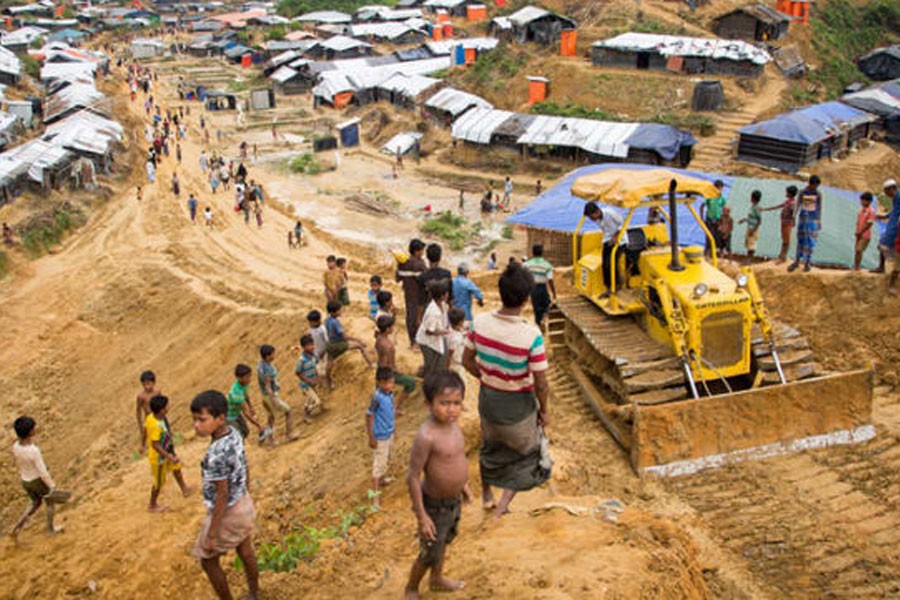Bangladesh is experiencing one of the worst humanitarian crises in its history due to an unprecedented influx of refugees from Myanmar.
As of December 2017, the Inter Sector Coordination Group (ISCG) estimates that 623,969 refugees have arrived in Bangladesh since August 2017.
These 623,969 refugees have joined 212,518 that have fled in earlier waves of displacement, for a total refugee population of 836,487.
In response to the crisis, the humanitarian community developed a Humanitarian Response Plan (HRP).
The Bangladesh Government restricted the construction of semi-permanent and permanent structures in both refugee camps and makeshift camps. Poor shelter conditions have further exposed the Rohingya population to risks of floods, cyclones and landslides.
The target of shelter support within the HRP is to meet 100 percent of people’s shelter needs. This translates into safe shelter for 949,000 people, or 180,000 households.
The initial stage of the Rohingya crises involved rapid, mass displacement of populations, during which shelter needs focused on access to adequate shelter for survival and dignity.
Various humanitarian actors provided emergency shelter kits (ESK) for essential security and personal safety, protection from the climate and enhanced resistance to disease and ill health.
ESK developed by the shelter sector included tarps, rope and bamboo. However, in the initial response, most agencies provided an acute version of these items, which excluded bamboo.
In most cases, the refugee families procured some bamboo themselves, or foraged for sticks and timber in the surrounding forest to construct rudimentary makeshift shelters, according to Relief Web.


